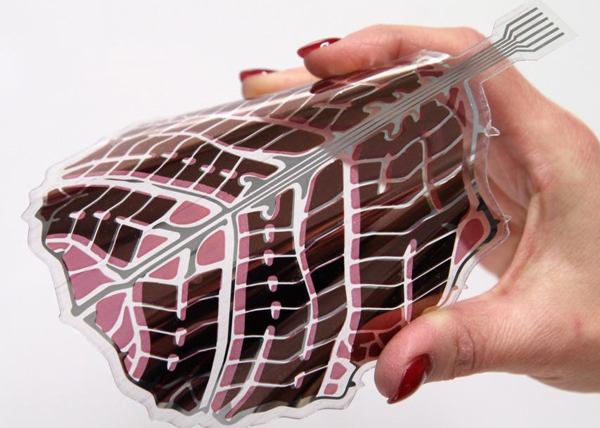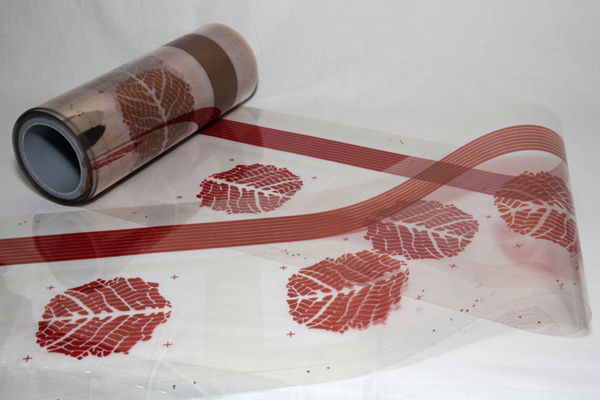
[Image above] Credit: Antti Veijola, VTT Technical Research Centre
Could solar panels someday be a thing of beauty in both form and function?
Thanks to the work of scientists at VTT Technical Research Centre (Finland), we can finally have our solar energy and use it as a design element, too.
Using a method of mass production based on roll-to-roll printing, the VTT team is printing decorative and flexible organic photovoltaic (OPV) solar panels that are as pretty as they are powerful.
According to a VTT news release, the method can produce a roughly 0.2 mm-thick decorative solar panel, which includes a layer of electrodes and one of polymers, that can be included in windows, walls, machinery, equipment, and billboards. In addition to being fast, it also prints in mass—screen- or gravure-printing close to 100 meters of layered film per minute.
“Until now, it has only been possible to pattern OPV panels into a form of stripes,” states the release. “The research scientists have tested the feasibility of the method by printing leaf-shaped photovoltaic cells. Active surface of a one leaf is 0.0144 square meters and includes connections and a decorative part. Two hundred OPV leaves make one square metre of active solar panel surface that generates 3.2 amperes of electricity with 10.4 watts of power at Mediterranean latitudes.”
The team recognizes that the OPV panels aren’t as efficient as their silicon counterparts, but the market for such offerings is “emerging.” Also, the organic materials used in the panels can be recycled—an idea that’s far more beautiful than the ability to print pretty solar cells.
The researchers are currently exploring how their roll-to-roll method might translate to the development of inorganic perovskite solar panels—which perform “roughly five times better” and cost close to 10 times less—and report that early testing has been “promising.” They’re also working on a way to use solar cells as receivers, transferring data seamlessly without wires.
We’ll report on the development of both as it happens.

